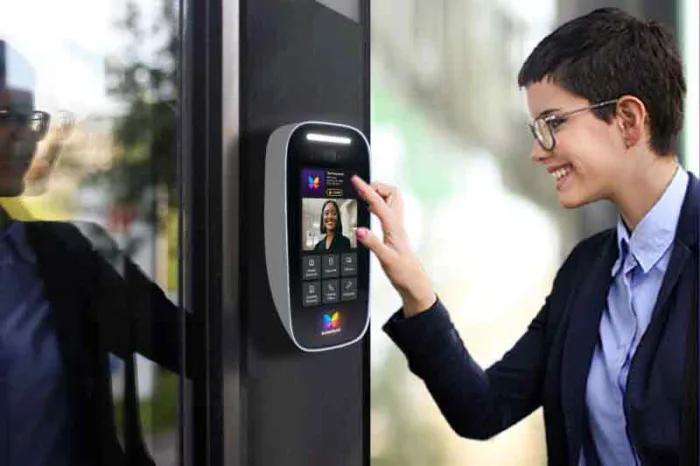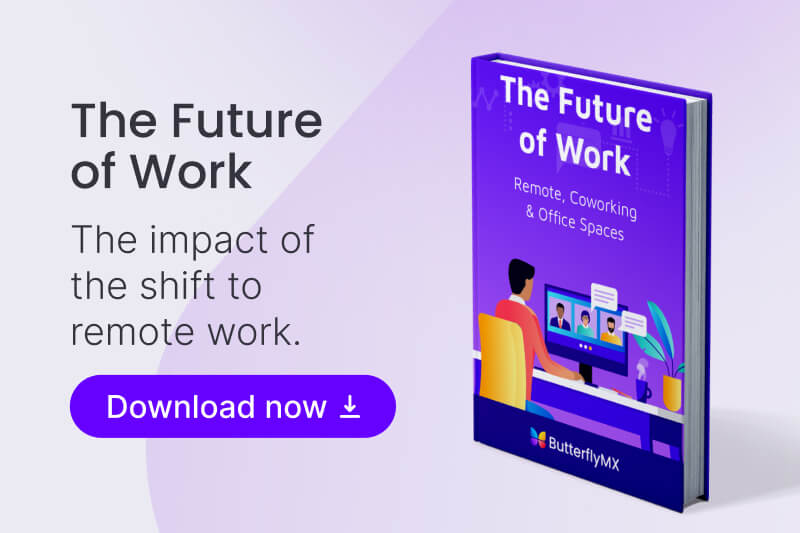Key takeaways
- The future of work leads to a more robust and equitable society where the greatest number of people can thrive and succeed. In the past few years, our eyes have been opened to the incredible ways that technology mobilizes human beings to achieve the unimaginable and think the unthinkable. And going forward, technology will continue to be a significant part of how we work, live, and play.
- The best outcome for the future of work is within arm’s length for everyone. As technology continues to evolve, it’ll become more and more accessible and affordable to the greatest masses of people. Even now, technology provides solutions and remedies to some of the biggest challenges that the human race currently faces.
- It empowers us to connect and collaborate with those who are thousands of miles away. And it helps cure some of the deadliest diseases.
- There hasn’t been a better time to be alive than today. And it’ll get even better in the future of work and play.
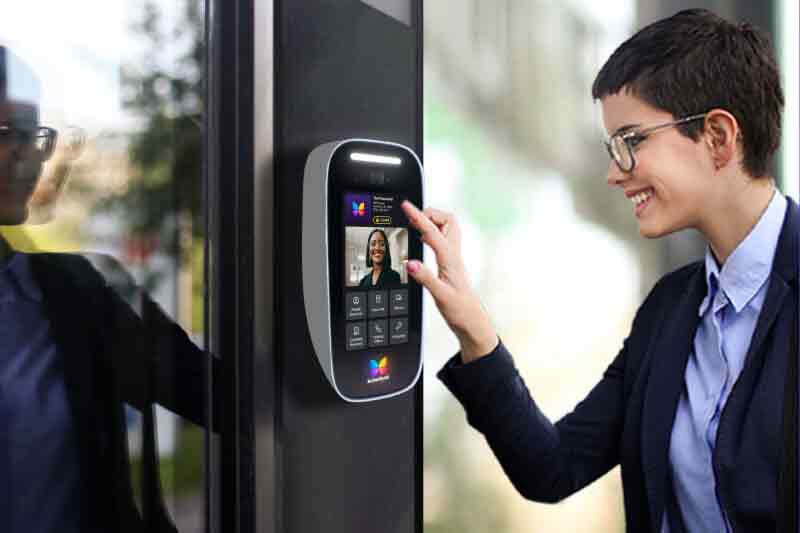
These days, the future of work is top of mind not only for corporate executives but also for real estate professionals. Whether you’re a property owner, investor, developer, or manager, how the pendulum swings in the future of the workforce has a significant impact on how buildings operate and thrive.
So, we must closely examine what the future of work means for real estate and adapt to this newfound reality. Read on to uncover the fascinating future of work, its impact on real estate, and how technology can prepare you for the “new normal.”
In this comprehensive guide, we’ll cover:
- What is meant by the future of work?
- How the future of work impacts real estate
- The role of technology in the future of the workforce
- How real estate can prepare for the future
What is meant by the future of work?
In broad strokes, the future of work meaning is the projection of how work, employees, and office spaces will evolve in the years ahead. It specifically became a popular topic of discussion when the COVID-19 pandemic disrupted the workforce across all industries, forcing millions of workers to work remotely from home.
But here’s the kicker:
Even years before the global pandemic, technology has been shaping the workplace. As early as the 1970s, companies have been experimenting with the concept of “remote work,” as coined by NASA physicist Jack Nilles. In an effort to reduce carbon emissions produced by vehicles, US government sectors encouraged employees to work from home.
Years later, the 1990s internet boom and the advancement of personal technology fueled the adoption of remote work even further.
For example:
By 2004, all federal employees had the option to telecommute. And the aftermath of the 2008 financial crisis left millennials entering the “gig economy” as the job market crashed. This was around when coworking spaces started to penetrate major metropolitan areas.
Into the later half of the 2010s, 70% of the world’s population was working remotely at least once a week – 53% for at least half the week. By this time, millennials dominated the workforce, and they had different life priorities. They traded in 40-hour workweeks and homeownership for the flexibility to change careers, travel, and save money.
See how ButterflyMX works in offices:
COVID-19 accelerated the adoption of remote work
At the beginning of 2020, approximately 10% or fewer Americans worked remotely full-time. And as we all know, the pandemic forced millions to work from the comfort and safety of their homes.
Fast forward to the end of 2021: 26.7% of US employees continued to work from home, according to Upwork. Globally, 51% of “knowledge workers” — whose jobs can be completed entirely on a computer — worked remotely during 2021, up from 27% in 2019.
But that’s not all.
According to a Harvard Business School senior lecturer, COVID-19 has fast-tracked the acceptability of remote work by 20 years. In the same vein, Stanford University researchers found that working remotely boosts productivity by 2.5%. As such, telecommuting is projected to stick around in the future of work after COVID and beyond.
What are the trends for the future of work?
Undoubtedly, this new workforce landscape — fueled by new tenant demands and needs — has forced commercial office buildings to reconfigure their layouts and leasing infrastructures. And as a result, the future of office spaces has shifted drastically.
In general, there are three prominent future of work trends:
1. Coworking spaces
Coworking spaces — otherwise known as flex offices — accommodate individuals and groups from different companies and industries to work independently within the same area. Unlike traditional offices, coworking spaces operate with short-term, flexible leases that can be customized to all different leasing terms.
The first-ever coworking office opened its doors in 2005 near San Francisco. Since then, tens of thousands of coworking spaces have been introduced worldwide.
Coworking spaces have the same amenities and features you’d find in a traditional office — often a lot more.
2. Hybrid workforce
As employers started to welcome workers back to the office, a hybrid workforce became a popular solution. A hybrid workplace comprises employees who work in the office and others who work from home. The option of where to work allows freedom over when and where work is completed.
Employees can choose to:
- Work full-time in the office
- Work from home full-time
- Split their time between both locations.
3. Satellite offices
The third trend is satellite offices, smaller than headquarter offices and located outside of major metropolitan areas. These offices are separate from an organization’s primary office and are meant to accommodate employees not located near the headquarters.
The pandemic encouraged employers to seek and hire job candidates from across the country — and even around the world. So, satellite offices encourage remote employees to meet nearby teammates in person.
But, there’s more:
Some existing employees may have embraced the digital nomad lifestyle, traveling while working remotely. As a result, satellite offices also offer these nomad workers opportunities to meet colleagues in person they otherwise wouldn’t.

How the future of work impacts real estate
The future of work impacts all sectors of real estate: multifamily, commercial, and industrial. More specifically, tenants’ choices regarding how and where they work and live have radically changed. As a result, the real estate industry must adjust its offerings and accommodations to retain tenants and improve their experiences.
Now, we’ll take a closer look at how the future of work impacts the following real estate sectors:
Multifamily
Multifamily property managers and staff must prepare for an increased demand for flexible leasing options.
The ability to work from anywhere with internet access has inspired many residents to hit the road and travel cross-country — and even the world. As a result, travelers need lease agreements shorter than the standard one-year term and instead range from a couple of weeks to months.
By offering short-term rentals, you’ll cater to residents who value flexibility and adaptability. In short, these digital nomads crave the adaptability of hotels and the amenities and hominess that fully furnished apartments offer.
For both short- and long-term residents, coworking spaces and building-wide WiFi are the most popular apartment amenities that they’re looking for in the near future of working from home. Since the internet is the lifeline to remote work for most residents, they’re willing to pay higher rent for high-speed internet access throughout the property.
4 steps to creating a coworking space in your multifamily building:
- Designate a lounge or empty leasing office as resident working stations.
- Switch out couches or other large furniture for individual chairs with tablet arms or desks.
- Sporadically add reading nooks or booths throughout the room. Make sure that some booths are large enough to accommodate group work.
- Install a WiFi router that has enough bandwidth for multiple residents to use at once.
Commercial
Office buildings have undoubtedly been hit the hardest during the pandemic. As workers adapt to this long-term — if not permanent — future of remote work, commercial property owners must get creative to keep their businesses afloat.
Here’s the deal:
Commercial properties might not see pre-pandemic occupancy rates anytime soon — or ever. So, you should search for other revenue sources, enticing potential tenants to lease with you.
Here are three tangible ways to add revenue-generating amenities to your property:
- Invite businesses to set up pop-up retail stores. Rent out small kiosks or designate spaces for small businesses to set up pop-up shops. As a property owner or manager, you’ll diversify your income stream and attract more foot traffic to your building. What’s more, these shops can also double as an amenity for office tenants.
- Add a gym. To keep vacancies low, you need to improve the tenant experience, encouraging them to continue leasing office spaces. Adding a gym to your property encourages tenants to spend more time there. Even employees who enjoy working from home may be drawn to an office with a gym.
- Open a convenience store with a deli. Whether tenants want to get a fresh cup of coffee in the morning or a quick bite for lunch, having a convenience store with a deli on your property will add tremendous value to your building. As a bonus, the convenience store will also attract passersby to stop in and complete their errands.
Industrial
These days, online shopping is off the charts. So to accommodate this trend, industrial properties have been in great demand as package fulfillment centers and shipping facilities are needed to meet customer demand.
According to the ninth annual “Industrial Tenant Demand Study” from JLL Industrial, e-commerce will constitute 40% of all retail sales over the next 5-10 years. As a result, the demand for manufacturing and other industrial spaces will outpace retail storefronts.
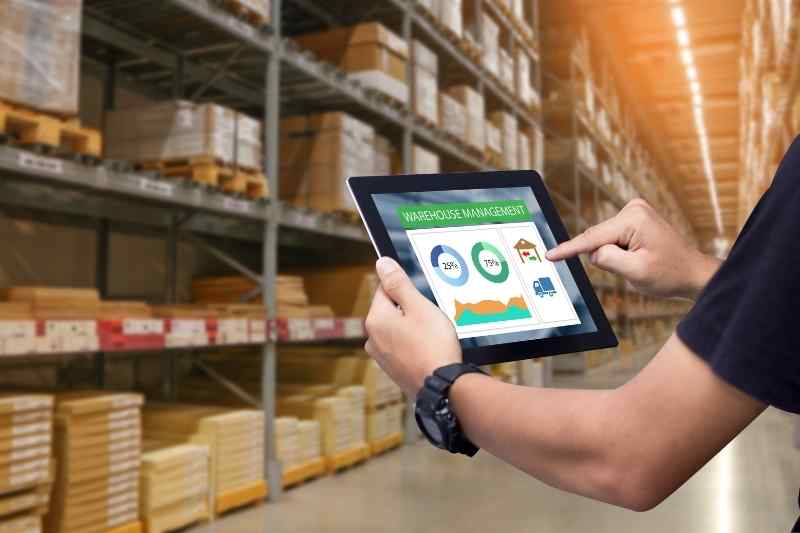
And e-commerce now makes up nearly a fifth of all industrial demand. As such, warehouse demand rose by 22% year-over-year in 2021. In efforts to fulfill this astronomical increase in online orders, the Logistics and Parcel Delivery (L&PD) sector has dominated warehouse leases and even transformed old run-down industrial buildings into fulfillment centers. In turn, all this has generated future work for property developers, construction professionals, and factory workers for years to come.
The role of technology in the future of the workforce
Just as the mass adoption of remote work wouldn’t have been possible or successful without technology, the future of work relies heavily on technology solutions and automation. Regardless of the type of property you own or manage, integrating property technology into one centralized platform will be the key to shaping the future workplace, home life, and society.
According to numerous surveys, both managers and employees alike believe their jobs will remain largely remote. Hybrid and flexible work schedules will become permanently and widely accepted. With this said, the remote work future holds big implications for the role of technology in the workplace and home in terms of access control, space utilization, and automation.
What is the future of work characterized by?
The future of work is characterized by the rapid adaptation of technology to:
- Improve the tenant experience at commercial spaces
- Facilitate a greater work-life balance for multifamily residents
- Automate tedious building processes for all parties involved
- Improve the energy efficiency of buildings for a greener tomorrow
Now:
Using technology for automation and the future of work go hand-in-hand. Real estate is notoriously known for its reluctance to employ technology throughout the industry. But now, property managers have no choice but to embrace the world of smart technology both in offices and residential spaces to remain relevant and succeed in today’s reality.
For instance, you may need to rethink old building processes, such as access control, to create a safer and cleaner environment for everyone in your building. To prevent the spread of germs and viruses, properties of all kinds are creating a touchless entry system for tenants, staff, and visitors.
In the next section, we give tangible examples of how you can best prepare for the future of work.
How real estate can prepare for this future
In a nutshell, real estate professionals must facilitate a commercial building environment where tenants can safely work, live, and play. Regardless of where people choose to live or work, they’ll always need a designated workspace and a way to manage visitor access in buildings.
Here are the top six smart technology devices to future-proof your property for whatever lies ahead:
- Mobile-based video intercom
- Elevator controls
- Smart HVAC system
- Package room
- Smart keypads and locks
- Front desk station
1. Mobile-based video intercom
Whether you manage an apartment with short-term tenants who are coming and going or an office building with a hybrid work model, you’ll need a way to control access at the front door or gate. You want to maintain security without impeding seamless access for tenants and their visitors.
So, choose a video intercom with a highly-rated mobile app. This way, tenants can open the door for guests and themselves with their smartphones. The intercom’s video component empowers tenants and building staff to visually confirm the identities of visitors before allowing them to enter the building.
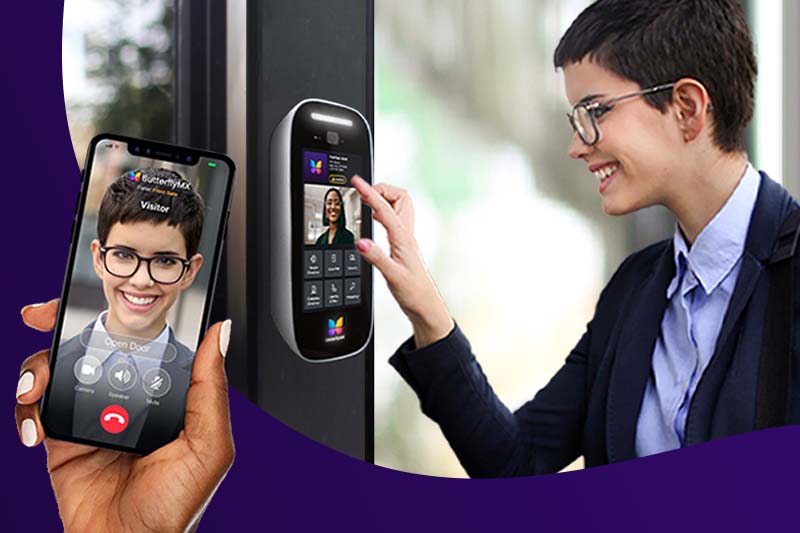
2. Elevator controls
In a multi-story building, elevator controls automatically direct tenants and visitors to their intended floors. This ensures that each person can access only the floors they’re supposed to be on, protecting the privacy and safety of all parties involved.
3. Smart HVAC system
A smart HVAC system improves the air quality and ventilation in a building while saving energy and costs. The system uses sensor technology to detect room occupancy and temperature to automatically adjust settings. This ensures that heat or AC never blasts in an empty room, creating a greener environment by conserving energy.
Smart HVAC systems are particularly useful in the future of work because room and building usage will change. For example, an office building might not be used heavily during the traditional 9 to 5 hours, but instead be occupied during evenings or even on weekends. So, smart temperature controls will ensure that HVAC systems are only operating when needed.
4. Package room
You’ve probably noticed a sizeable rise in package deliveries at your property. Save your staff’s time and prevent package theft by setting up a controlled access package room.
This way, couriers can easily place packages inside the room, and tenants have the peace of mind that their deliveries are safe. Plus, this frees your staff’s time from processing mountains of packages a day.
5. Smart keypads and locks
Install smart keypads for shared spaces — such as fitness centers and lounges — and smart locks for individual apartment and office units. Such technology saves you the time and money of distributing physical access credentials and rekeying locks. All tenants need is their smartphones to enter these access-controlled spaces inside buildings.
6. Front desk station
Implement a visitor management solution in the form of a front desk station. This cloud-based software allows your staff members to manage visitors and facilitate communication between them and tenants.
By connecting a webcam to the software, you can capture time- and date-stamped photos of visitors for a detailed entry log. Not to mention, you’ll be capable of calling residents directly from the software so they can verify the visitor’s identity. This way, you increase the safety and security of your property.
